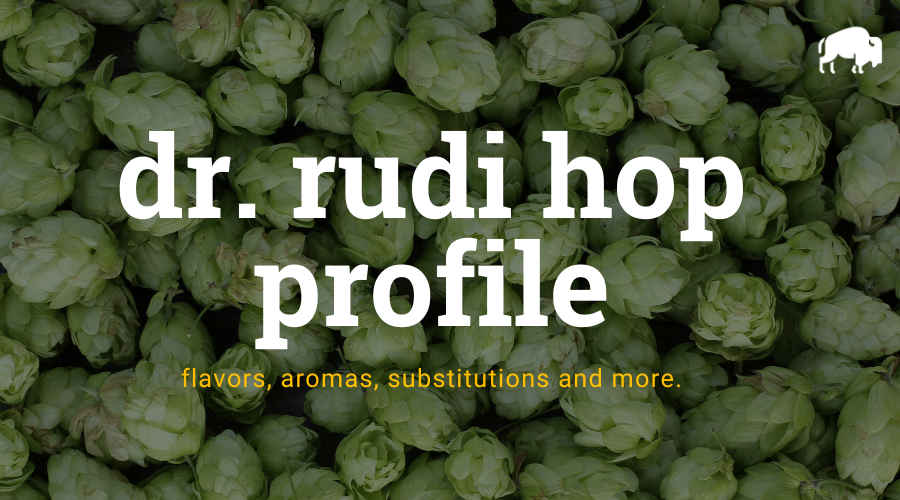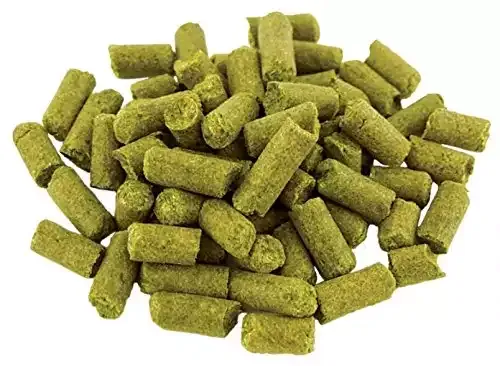
Dr. Rudi is a triploid variety of hops first cultivated in 1976 by the New Zealand Horticultural Research Center. The breeder, considered the father of New Zealand’s hop program, was honored by renaming the hop to Dr. Rudi in 2012. These hops are native to New Zealand and are known for their bright aromas of pine, lime pith, and lemongrass. They have an average alpha acid percentage, and total oils usually fall in the range of 1.1-1.5 ml/100g.
Dr. Rudi hops were initially bred as the SuperAlpha variety, making them suitable for carrying IPAs independently. Still, they display best in lighter styles such as pilsners and pale ales. They are considered a dual-use hop, known for their clean and crisp bittering despite their high cohumulone content and grassy, piney, and citrusy character. These hops are harvested in late February to early April. They can be used in all hop additions throughout the brewing process.
| Usage: | Dual-Purpose |
| Country of Origin: | New Zealand |
| Hop Growers Code: | DRU |
Where To Buy Dr. Rudi Hops
Dr. Rudi Flavor And Aroma
Dr. Rudi is a dual-purpose hop that is often described to have the following aroma characteristics:

grass

pine

citrus
Dr. Rudi Hop Oil Breakdown
Hop oils can vary from year to year and farm to farm but based on our research, here are the typical values we have seen reported. This information comes from various hop farms, The Hop Aroma Compendium, and For The Love Of Hops.
| Alpha Acid % (AA) Alpha acids are what is isomerized when boiling to create bitterness in beer. | 10.0% – 12.0% |
| Beta Acid % Beta acids are what give hops their more aroma and flavor compounds. | 7.0% – 8.5% |
| Alpha-Beta Ratio This ratio of alpha acids to beta acids determines how quickly bitterness fades during aging. Lower ratios are common for aromatic varieties. | 1:1 – 2:1 |
| Co-Humulone as a % of Alpha Higher numbers are said to impart a harsher bitterness. | 36% – 39% |
| Total Oils (mL/100g) With more total oils, typically comes a more complex hop profile but these are highly volatile compounds. | 1.5mL |
| Myrcene green, resinous | 29% – 48% |
| Humulene woody, piney | 22% – 33% |
| Caryophyllene woody | 6% – 10% |
| Farnesene floral | 0% – 1% |
| Other Oils: Includes beta-ionine, beta-pinene, limonene, linalool, geranoil & selinene | 24% – 30% |
| Hop Storage Index (HSI) The HSI indicates the percent of alpha and beta acids lost after 6 months of storage at room temperature (68°F or 20°C). | Retains 60%-70% alpha acid after 6 months storage at 20ºC (68ºF). |
| Hop Storage Index (HSI) Rating | Fair – Good |
Dr. Rudi Hop Substitutions
Replacing one hop for another is seldom straightforward but sometimes you don’t have the right hop or the right quantity of hops for the beer you want to make. For those situations, we have made a comprehensive list of hops to substitute on brew day.
These substitutions aren’t perfect as hop chemistry is pretty complex.
We wanted to make this list of substitutions with varietals that are easy to find when possible. For Dr. Rudi, we recommend substituting with the following hops:
Beer Styles
For the most part, any hop could have a place in just about any beer style. Based on popular beers, historical usage, and our own preferences, we would recommend using Dr. Rudi for IPA, New England IPA, Pale Ale, Wheat Beer, Golden Ale. That being said, experiment and see what works best for you.
References
https://www.hopslist.com/
https://www.ars.usda.gov/
https://www.brewersassociation.org/
https://www.barthhaasx.com/
https://www.yakimachief.com/
Hieronymus, Stan. For The Love of Hops. Brewers Publications, 2012
The Hop Aroma Compendium. 2012


